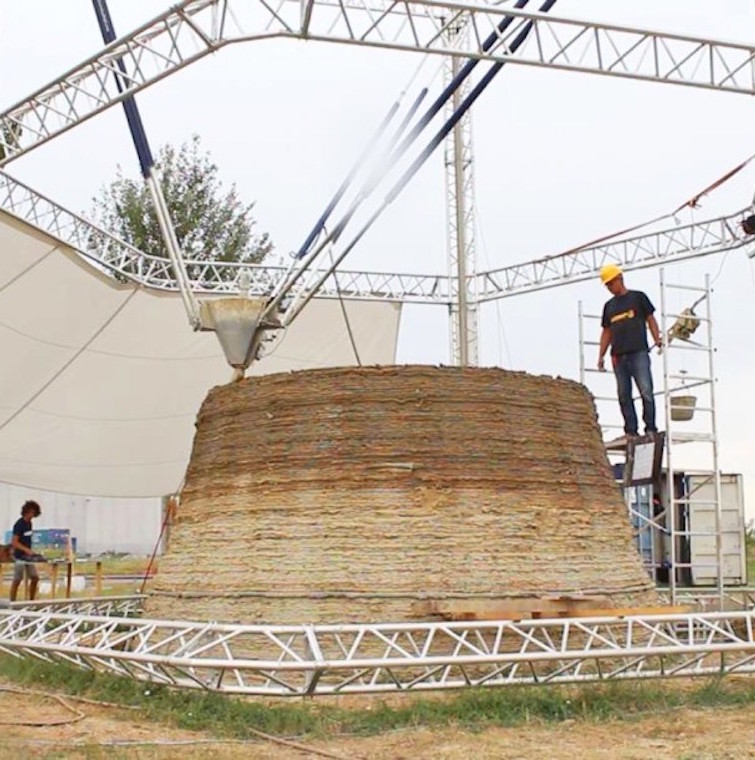MASSA LOMBARDA, Italy — I like driving through the boonies in New Mexico and seeing the old adobe buildings sitting back from the road. In Santa Fe, all of the houses (by law) have a strange stucco exterior that approximates (kind of) real adobe, but a few miles out of the city you can see authentic mud buildings weathering in the desert sun. Some are ruins dating back hundreds of years.
We’ve come full-circle because people are starting to build mud houses again, only today we have tech to give us a hand. WASP (World’s Advanced Saving Project) is an Italian company that builds 3D printers inspired by mud dauber wasps. Using this 40-foot-tall printer and some scaffolding, WASP is able to create dirt-cheap homes out of mud. You can see more in the video below, but to picture it imagine one of Olivier Van Herpt’s vessels writ large.
Inhabitat has some background on the company. I have a high threshold of skepticism when high-minded goals of saving the world start to get partnered with terms like “commune,” but that was before I saw the printer in action.
Shamballa is located at Massa Lombarda, a commune in the Italian province of Ravenna. There, WASP is testing their 3D-printer at an open-air site. They’ve invited local makers to participate in the project, which they describe as the first house 3D-printed completely from the unique earthy mix of “terrain and straw.” The mix is kneaded with a “mixing machine and motor hoe.”
They’ve taken design into account: WASP has used the earth to 3D-print fanciful patterns. So far they have a wall about 20 inches high, and after a promising test last weekend, WASP plans to continue 3D-printing with BigDelta until their first home is complete.
Sure it’s tech and tech is pricey, but imagine what could be accomplished with a machine that could make a reinforced, insulated shelter out of the cheapest and most abundant substances on the planet! I feel like there should be a catch and, seeing very little in that regard, I will watch this develop with interest. I do wonder, however, if the printer is limited in its diameter. The proof of concept looks like a large kiva more than a house and while this will make a handy, if cramped, home for a lone individual, it looks less attracive once partners or families start getting involved. What I’ve read did point out that this is in the testing stage; more advancements could be on the way.
Bill Rodgers is the Managing Editor of cfile.daily.
Do you love or loathe this example of contemporary ceramics? Let us know in the comments.






High tech, yes, but what was that bucket being lifted to fill the reservoir of material? Seems that there should be something a little more efficient there. And I agree with Erik Gellert, the design of the building mechanism or ‘printer’ could be more loosely interpreted. But this is fascinating, for sure!
If this technology were employed more like a mud dauber actually builds, it could be infinitely more expandable. Imagine an aerial drone tethered by a hose through which the material would be pumped, and then routed through the drone and extruded out it’s servoed, articulated, rear-end. This whole surrounding apparatus seems an unnecessary constraint by people thinking within the 3-D printing box. So much potential in this technology. Thanks for the article.
I have seen larger printers that build cement homes. This may be the future. The main difficulty will be the surrounding area necessary to set up the apparitrice.